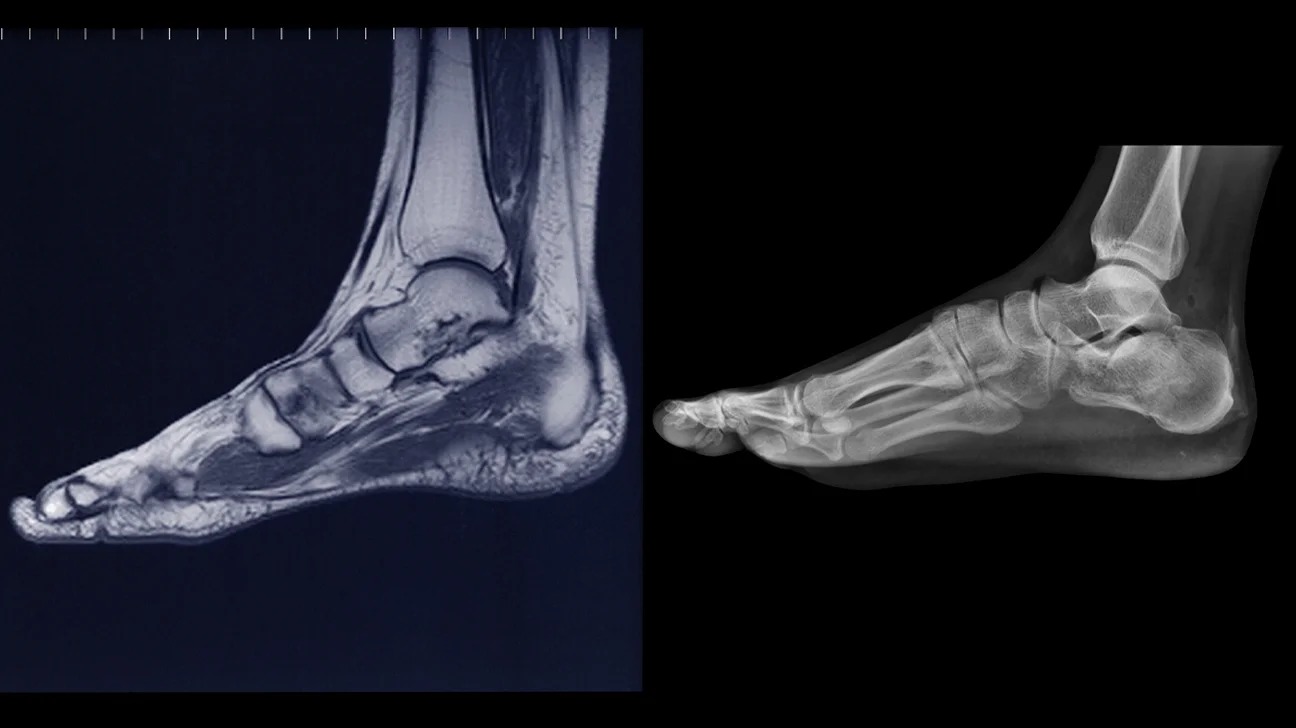Home>Finance>How Much Does Foot Surgery Cost Without Insurance?


Finance
How Much Does Foot Surgery Cost Without Insurance?
Modified: December 29, 2023
Looking for foot surgery cost without insurance? Find out how much you may need to finance for your foot surgery.
(Many of the links in this article redirect to a specific reviewed product. Your purchase of these products through affiliate links helps to generate commission for LiveWell, at no extra cost. Learn more)
Table of Contents
Introduction
Foot surgery can be a life-changing procedure for individuals suffering from chronic foot pain or debilitating foot conditions. However, one major concern for many people considering foot surgery is the cost, especially if they don’t have health insurance coverage. The expense of foot surgery can vary significantly depending on multiple factors, including the type of surgery, the surgeon’s experience, the geographical location, and other medical costs associated with the procedure.
In this article, we will explore the common types of foot surgery, the factors that can affect the cost, and information about the average cost of foot surgery without insurance. Additionally, we will also discuss available financing options and tips for finding affordable foot surgery alternatives.
Foot surgery aims to alleviate pain, correct deformities, and restore proper foot function. Some common types of foot surgery include bunionectomy, hammertoe correction, arthritis surgery, plantar fasciitis release, and neuroma excision, among others. Each of these procedures addresses specific foot conditions and involves different levels of complexity.
When it comes to the cost of foot surgery, several factors come into play. Firstly, the type and complexity of the surgery will heavily influence the overall cost. More complex surgeries that require specialized techniques, longer operating times, or the use of implants or hardware may be more expensive. Secondly, the experience and reputation of the surgeon will also impact the cost. Highly skilled and renowned surgeons may charge higher fees for their expertise.
The geographical location of the healthcare facility is another significant factor influencing the cost of foot surgery. Large metropolitan areas or regions with a higher cost of living tend to have higher medical costs overall, including surgical procedures. Additionally, other medical expenses, such as pre-operative consultations, post-operative care, medication, and physical therapy, can add to the total cost of foot surgery.
Now, let’s delve into the average cost of foot surgery without insurance and explore potential financing options to help individuals manage the financial burden associated with these procedures.
Common Types of Foot Surgery
Foot surgery encompasses a wide range of procedures aimed at resolving various foot conditions and injuries. Here are some of the most common types of foot surgeries:
- Bunionectomy: A bunion is a bony bump that forms at the base of the big toe and can cause pain and deformity. Bunionectomy involves the removal of the bony prominence and realignment of the joint.
- Hammertoe correction: Hammertoes occur when the toes become bent or curled, causing discomfort and difficulty in wearing shoes. During this procedure, the surgeon may remove a portion of the toe joint or release tight tendons to straighten the toe.
- Arthritis surgery: Arthritis can affect the foot joints, leading to pain, stiffness, and limited mobility. Surgery for arthritis may involve joint fusion, joint replacement, or joint removal to relieve pain and improve function.
- Plantar fasciitis release: Plantar fasciitis is a common condition that causes severe heel pain. In this surgery, the tight plantar fascia ligament is released, reducing inflammation and relieving pain.
- Neuroma excision: Neuromas are painful, enlarged nerve tissues that commonly occur between the third and fourth toes. Excision surgery involves removing the affected nerve to alleviate pain and restore foot function.
Other foot surgeries may include Achilles tendon repair, flatfoot correction, stress fracture repair, and toe deformity correction. The specific procedure recommended for an individual will depend on their specific foot condition and the severity of their symptoms.
Before undergoing any foot surgery, it is crucial to consult with a qualified podiatrist or orthopedic surgeon who can provide a thorough examination and recommend the most appropriate treatment plan for the specific foot condition.
Factors Affecting the Cost of Foot Surgery
The cost of foot surgery can vary significantly depending on several factors. Understanding these factors can help individuals anticipate the expenses associated with the procedure. Here are the key factors that can influence the cost of foot surgery:
- Type and complexity of the surgery: The type of foot surgery being performed is one of the primary factors affecting the cost. Complex procedures, such as joint replacements or reconstructive surgeries, are generally more expensive than simpler procedures like bunion removal or neuroma excision.
- Surgeon’s experience and reputation: Surgeons with extensive experience and a good reputation in the field often command higher fees. Their expertise and skill can contribute to better outcomes, but it may come with an additional cost.
- Geographical location: The cost of foot surgery can vary depending on the geographical location. In areas with a higher cost of living or in larger cities, medical expenses tend to be higher overall, including surgical procedures.
- Anesthesia and operating room fees: Anesthesia and operating room fees are additional costs associated with foot surgery. The complexity and duration of the procedure can impact these fees, as longer surgeries or those requiring specialized techniques may incur higher costs.
- Pre-operative and post-operative care: Some foot surgeries may require pre-operative consultations, imaging tests, and post-operative care, such as follow-up visits, bandages, and physical therapy. These additional medical expenses should be considered when calculating the overall cost of foot surgery.
- Medications and medical supplies: The cost of medications, such as pain relievers and antibiotics, as well as any necessary medical supplies like post-surgical shoes or braces, can also contribute to the total cost of foot surgery.
It is important to discuss these cost factors with the surgeon or their billing office in advance to get a clear understanding of the expenses involved. They can provide a breakdown of the costs specific to the individual’s situation, including any additional expenses that may arise based on their unique circumstances.
While foot surgery can be expensive, it is essential to prioritize the quality and expertise of the surgeon and the healthcare facility. Opting for the least expensive option may not always result in the best outcomes, so it’s important to strike a balance between cost and quality of care.
Average Cost of Foot Surgery without Insurance
Foot surgery can be a significant financial investment, particularly for those without health insurance coverage. The cost of foot surgery without insurance can vary widely depending on various factors, including the type and complexity of the procedure, the surgeon’s fees, the geographical location, and additional medical expenses. While it is challenging to provide an exact figure for the average cost of foot surgery, we can discuss some general estimates.
On average, the cost of foot surgery without insurance can range from $3,000 to $15,000 or more. Simple procedures like bunion removal or hammertoe correction may fall on the lower end of this range, while more complex surgeries such as joint replacement or reconstructive procedures can be on the higher end.
It is important to note that these figures are just rough estimates, and the actual cost will depend on the factors mentioned earlier. The geographical location plays a significant role, as medical costs can vary between different regions and healthcare facilities. Highly populated areas or areas with higher costs of living tend to have higher medical expenses overall.
Additionally, the surgeon’s fees will also impact the cost. Experienced and reputable surgeons may charge higher fees for their expertise, resulting in a higher overall cost for the surgery.
Other factors contributing to the cost include anesthesia fees, operating room fees, pre-operative and post-operative care, medications, and medical supplies. These additional expenses should be taken into account when estimating the total cost of foot surgery.
It is important for individuals without insurance to explore financing options and discuss payment plans with the surgeon or healthcare facility. Many healthcare providers offer flexible financing options, allowing patients to spread the cost of foot surgery over a period of time, making it more manageable financially.
Additionally, some individuals may qualify for government assistance programs or charitable organizations that provide support for medical expenses. It is worthwhile to research available resources and discuss options with healthcare professionals and social workers who can provide guidance in accessing financial assistance.
Overall, the cost of foot surgery without insurance can be significant. However, by exploring financing options and discussing payment plans, individuals can make this life-changing procedure more accessible and affordable.
Financing Options for Foot Surgery
Foot surgery is a major investment, and for those without insurance coverage, finding the means to finance the procedure can be a challenge. However, there are several financing options available that can help individuals manage the cost of foot surgery. Here are some common financing options to consider:
- Payment plans: Many healthcare providers offer payment plans to help patients distribute the cost of foot surgery over time. These plans often involve monthly installments with little to no interest, making it more manageable for individuals to pay off the surgery expenses gradually.
- Medical credit cards: Some credit card companies offer medical credit cards specifically designed for healthcare expenses. These cards often come with promotional periods of zero or low-interest rates, providing individuals with an opportunity to finance their foot surgery with manageable monthly payments. However, it is essential to read the terms and conditions carefully to understand the interest rates and any potential fees associated with these cards.
- Personal loans: Taking out a personal loan from a bank or credit union is another option to consider. Personal loans can provide individuals with a lump sum of money to cover the cost of foot surgery, which can then be repaid in fixed monthly installments over a specified period. It is important to research and compare interest rates and repayment terms from different lenders to find the most favorable loan options.
- Healthcare financing companies: There are specialized healthcare financing companies that offer loans specifically for medical procedures. These companies work directly with healthcare providers and often offer low-interest or interest-free financing options. Some well-known healthcare financing companies include CareCredit and Prosper Healthcare Lending.
- Government assistance programs: Depending on an individual’s financial situation, they may be eligible for government assistance programs aimed at providing support for medical expenses. Programs like Medicaid or state-specific assistance programs may help cover the cost of foot surgery for those who meet the eligibility criteria.
- Charitable organizations: Certain charitable organizations and foundations provide financial assistance for individuals in need of medical procedures. These organizations may have specific criteria, so it is important to research and reach out to them directly to inquire about available support.
It is crucial to thoroughly research and compare the different financing options available to determine which one best suits an individual’s financial situation. Consulting with the healthcare provider’s billing office can also provide guidance on the available financing options and assist in understanding the application process.
Remember to consider the interest rates, repayment terms, and any associated fees when assessing the affordability of each financing option. It is advisable to calculate the total repayment amount to ensure it aligns with the individual’s budget and financial capabilities.
By exploring these financing options, individuals can alleviate the financial burden associated with foot surgery and make this important procedure more accessible.
Seeking Affordable Foot Surgery Options
Foot surgery is a significant investment, but there are ways to make it more affordable. If you’re looking to reduce the cost of foot surgery, here are some strategies to consider:
- Research multiple healthcare providers: It’s important to shop around and compare prices from different healthcare providers. Prices for foot surgery can vary significantly, so obtaining quotes from multiple providers can help you find more affordable options.
- Consider outpatient surgery centers: Outpatient surgery centers often have lower overhead costs compared to hospitals, which can result in more affordable surgical procedures. Research nearby outpatient centers and consult with your healthcare provider to determine if this is a viable and cost-effective option for your foot surgery.
- Explore medical tourism: Medical tourism involves traveling to another country for medical procedures. This option can sometimes offer significant cost savings on foot surgery. However, it is essential to thoroughly research the quality and reputation of healthcare providers in the destination country and consider any additional expenses related to travel and accommodation.
- Discuss alternative treatment options: In some cases, surgery may not be the only solution for certain foot conditions. Exploring alternative treatment options with your healthcare provider, such as physical therapy, orthotics, or medication, may provide relief without the need for surgery.
- Utilize healthcare savings accounts: If you have a healthcare savings account (HSA) or flexible spending account (FSA), you can use these funds to cover some or all of the costs associated with foot surgery. These accounts allow you to save money on a pre-tax basis specifically for qualified medical expenses.
- Seek assistance from charitable organizations: There are charitable organizations and foundations that provide financial assistance for medical procedures, including foot surgery. Research these organizations and inquire about potential support that may be available to you.
- Discuss payment plans and discounts: Don’t hesitate to talk openly with your healthcare provider about your financial situation and inquire about payment plans or discounts they may offer. Some providers may be willing to work with you to make the cost of foot surgery more manageable.
It’s important to remember that while cost is a consideration, the quality and expertise of the surgeon and facility should also be taken into account. It’s crucial to strike a balance between affordability and receiving proper care for your foot condition.
When seeking affordable foot surgery options, thorough research, open communication with healthcare providers, and exploring various financing avenues can help make the procedure more accessible and financially manageable. Always consult with your healthcare provider to discuss the best options for your specific situation.
Conclusion
Foot surgery can be a life-changing procedure for individuals suffering from foot pain or deformities. However, the cost of foot surgery without insurance can be a concern for many. It’s essential to understand the factors that influence the cost, such as the type and complexity of the surgery, the surgeon’s experience, the geographical location, and additional medical expenses. By exploring financing options like payment plans, medical credit cards, personal loans, and healthcare financing companies, individuals can manage the financial burden of foot surgery.
Researching multiple healthcare providers, considering outpatient surgery centers, and exploring medical tourism options can help individuals find more affordable foot surgery alternatives. Additionally, engaging in open communication with healthcare providers about payment plans, discounts, and utilizing healthcare savings accounts can also alleviate the financial strain.
It’s important to prioritize the quality and expertise of the surgeon and healthcare facility when seeking affordable foot surgery options. While cost is a consideration, receiving proper care and achieving the desired results should be the ultimate goal.
In conclusion, if you are considering foot surgery without insurance, it’s crucial to thoroughly research the costs involved, explore financing options, and have open conversations with healthcare providers. By taking these steps, individuals can navigate the financial aspects of foot surgery and make informed decisions to improve their foot health and overall well-being.














